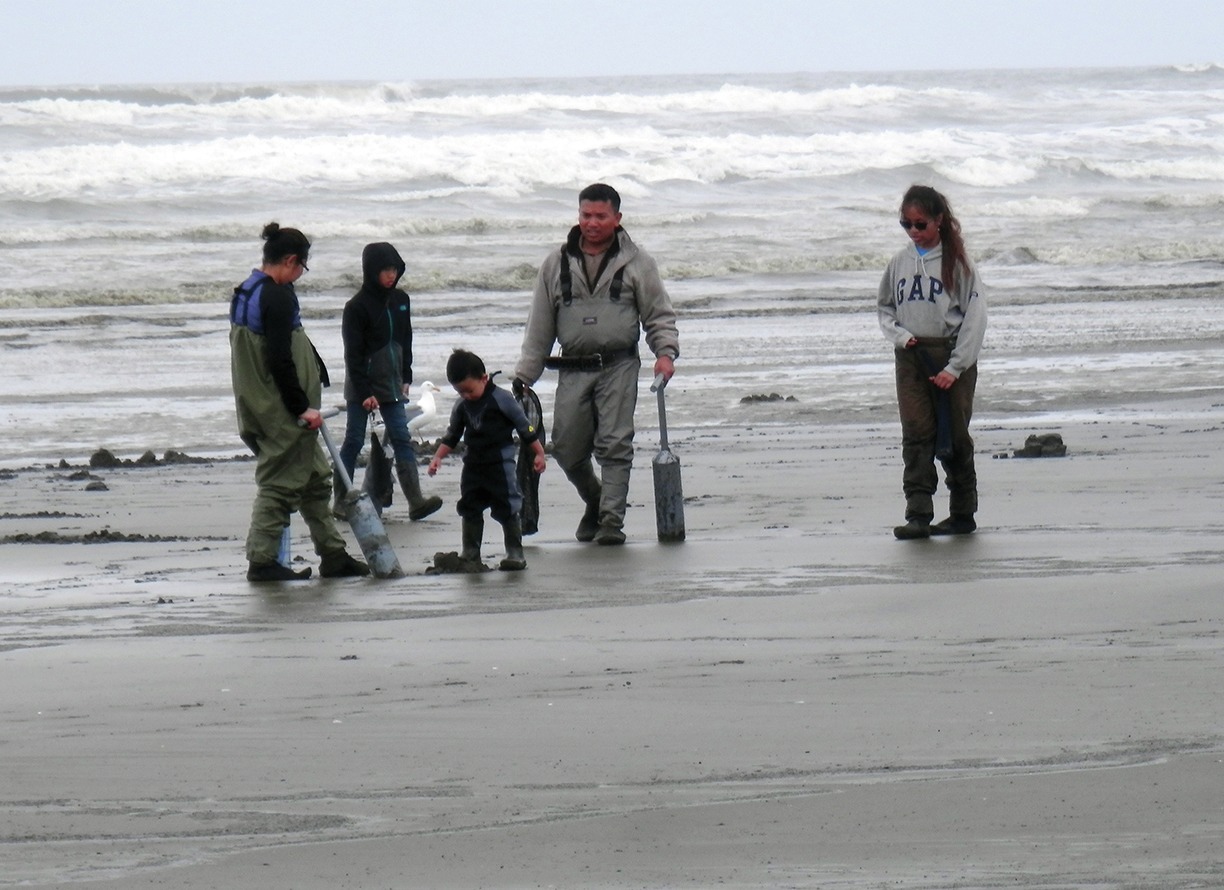The first razor clam dig of the fall season is planned for mid-October on four ocean beaches, including two on the North Beach, with additional digs tentatively scheduled through December.
Final approval of all scheduled openings will depend on results of marine toxin tests that show the clams are safe to eat, said Dan Ayres, coastal shellfish manager for the Washington Department of Fish and Wildlife (WDFW).
“We’re releasing a tentative schedule earlier than usual this year to give people plenty of time to make plans to go digging this fall,” Ayres said. “We also invite comments on management options, including dig scheduling, for our spring openings that we plan to announce later this year.”
Comments on the spring digs can be sent via email to razorclams@dfw.wa.gov. Also available is a summary of last season and an overview of the recently completed 2016-17 razor clam stock assessment.
WDFW estimates the total razor clam population on Washington’s ocean beaches has increased slightly over last year.
“Long Beach has the largest population of razor clams the department has measured in the last 25 years,” Ayres said. “The population at Twin Harbors also is strong and should provide good digging opportunities this year.”
However, Mocrocks and Copalis show population declines, which will mean fewer digging days on those beaches this year.
The first proposed razor clam dig, along with evening low tides and beaches, is listed below:
• Oct. 14, Friday, 5:55 p.m.; 0.2 feet; Long Beach, Twin Harbors, Copalis, Mocrocks
• Oct. 15, Saturday, 6:42 p.m.; -0.6 feet; Long Beach, Twin Harbors, Copalis, Mocrocks
• Oct. 16, Sunday, 7:28 p.m.; -1.1 feet; Long Beach, Twin Harbors, Copalis, Mocrocks
• Oct. 17, Monday, 8:16 p.m.; -1.4 feet; Long Beach, Twin Harbors
• Oct. 18, Tuesday, 9:04 p.m.; -1.4 feet; Long Beach, Twin Harbors
• Oct. 19, Wednesday, 9:55 p.m.; -1.1 feet; Long Beach, Twin Harbors
• Oct. 20, Thursday, 10:50 p.m.; -0.7 feet; Long Beach
• Oct. 21, Friday, 11:50 p.m.; -0.1 feet; Long Beach
A list of additional proposed openings through Dec. 31, 2016, is available below.
WDFW continues monitoring toxin levels on all ocean beaches. The start of last season was delayed due to elevated levels of domoic acid, a natural toxin produced by certain types of marine algae. Recent testing indicates levels of domoic acid on all of Washington’s ocean beaches are well within state public health standards.
Toxin testing is performed within 10 days of a planned razor clam dig. WDFW typically announces whether the dig will go forward about a week before the opening.
Under state law, diggers are required to keep the first 15 clams they dig. Each digger’s clams must be kept in a separate container.
All diggers age 15 or older must have an applicable 2016-17 fishing license to harvest razor clams on any beach. Licenses, ranging from a three-day razor clam license to an annual combination fishing license, are available from license vendors around the state and WDFW’s licensing customer service number at (360) 902-2464.


